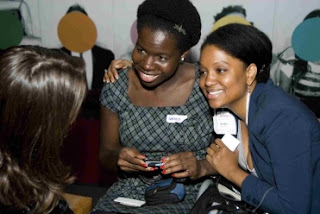 |
Last night I saw Michael Fassbender's new movie, Shame, filmed in New York City. It was the most intense and psychologically-draining film I have ever seen, and I recommend it strongly.
This film has been getting a lot of buzz lately and for good reason. If you haven't heard about it however, check out the trailer here. Fassbender is Brandon, a handsome and successful businessman who seemingly has a lot of good things going for him, but who is hiding a very sinister addiction: an addiction to sex.
He masturbates daily in the office bathroom. His computer hard drive at work and at home is full of every type of porno you can think of. His closets are full of it too. He frequently has sex with women online or with prostitutes, never with women whom he knows.
While such a problem might be hidden successfully when you are living alone, it is not so easy when someone begins to invade your privacy. Enter Sissy, Brandon's troubled and emotionally-dependent sister who moves in with him unexpectedly. It doesn't take long before her reappearance and the obvious tension between them begins to unravel Brandon's life.
The film focuses largely on Brandon's addiction and on his relationship with his sister. We see him spiraling out of control and hitting rock bottom in extremely visceral and emotional scenes.
Fassbender's performance is stellar. He gets all the subtleties in body language perfect, and all the raw emotions his character must be facing: the glint of his eyes as he moves from a woman's face to her legs, the train-wreck agony and self-loathing in his facial expressions as he sleeps with yet another prostitute.
The film does a really great job examining the intricacies and hard realities of addiction. Using long, clear screen shots in some scenes and narrow, unfocused shots in others help you feel the constant shift between being in control and being out of control. Brandon balances these moments back and forth throughout the movie, with each out-of-control scene getting harsher and harsher, and therefore more difficult to watch. The directors knew exactly how to shoot each scene, and Fassbender did a spectacular job all along the way.
Shame is not for the easily squeamish- it was rated NC-17 for its graphic sexual content- yet it is a must-see for those who can stomach it. It is a movie you will never forget, and that will leave you thinking for a very long time.






















